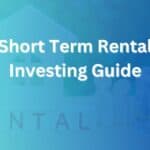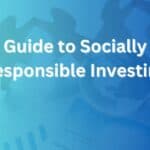Investing can be a great way to grow your money, but it can also be intimidating if you don’t know what you’re doing. The good news is, you don’t need a large sum of money to get started. With the right strategies, you can turn $500 into $1000 in no time. Smart investing strategies can help you maximize your returns and minimize risk. By leveraging the power of compounding interest, you can increase the value of your initial investment and maximize your returns. In this article, we’ll discuss how to turn $500 into $1000 with smart investing strategies. We’ll look at the different types of investments, diversification, and risk management strategies that you can use to maximize your profits and minimize your losses. With the right knowledge, you can start building a portfolio that will bring you financial success.
How Can I Turn $500 Into $1000?
1. Use a Simple Investment Strategy
The first step to turning $500 into $1000 is to choose a simple investment strategy that will help you grow your money. There are several options available for you to choose from, and the one you select will depend on your risk profile. If you’re a conservative investor, you might want to go with a balanced strategy. This is a combination of stocks and bonds that will provide both growth and income. You can use this strategy to start building your portfolio or even retire early. In the event of an emergency, you can use this strategy to cover short-term needs.
2. Diversify Your Portfolio
The second step is to diversify your investments by diversifying your portfolio across different asset classes. Many investors try to invest in one asset class at a time, but this is not a good idea because it will reduce the potential return on your investments as well as increase the risk of losing money. Instead, you should invest in multiple asset classes at once using complementary strategies that have different characteristics and risks but similar returns. For example, if you’re looking for growth, you should invest in stocks and bonds at the same time so that both assets are growing together in tandem. If you’re looking for income, you can invest in stocks and bonds at the same time, but it’s a good idea to invest in bonds first. You can always buy stocks when you’re ready to earn income.
3. Reduce Risk and Maximize Returns
The third step is to reduce risk by diversifying your investments across different asset classes, which will help you reduce the risk of losing money if one of your investments tanks. It’s also important to diversify your investments across different investment types, such as stocks, bonds, real estate, and other assets. By investing in multiple asset classes at once in complementary strategies that have similar characteristics and risks but different returns, you’ll increase the chances of making money over time. Diversification will also help you reduce overall portfolio risk by spreading your money across multiple strategies that are within each asset class. This will increase your potential return on investment (ROI) as well as minimize overall risk. With a simple strategy that starts at $500 and a diversified portfolio of stocks and bonds, for example, you can double your money within a year or less.
4. Diversify Your Investments
The fourth step is to diversify your investments by investing in different asset classes at the same time. This will help you reduce overall risk and maximize returns because you’ll be able to increase the potential return on your investments. You can also diversify by investing in different types of assets at the same time, such as stocks, bonds, real estate, and other assets that have similar characteristics but different risks and returns. This strategy will help you minimize overall portfolio risk and maximize the potential return on your investments. You can also diversify across different strategies within each asset class, such as stocks and bonds or real estate investment trusts (REITs), or commodities like gold or oil. With this strategy, you’ll be able to cover short-term needs with income-producing assets while building long-term wealth with growth assets in complementary strategies that have similar characteristics but different risks and returns.
5. Use a Range of Investment Strategies
The fifth step is to use a range of investment strategies that will help you diversify your investments and minimize overall portfolio risk because they are within each asset class. This strategy will help you cover both short-term needs with income-producing assets while building long-term wealth with growth assets in complementary strategies that have similar characteristics but different risks and returns. You can also use this strategy to create a balanced portfolio by investing in several different asset classes at the same time such as stocks, bonds, real estate, and other assets that have similar characteristics but different risks and returns. The best part about this strategy is it allows you to invest in several types of investments within each asset class at the same time to reduce overall portfolio risk while maximizing potential return on your investments. The more investments you have within each asset class, the more diversification you’ll have which will decrease the chances of losing money if one investment tanks. If you have a portfolio of investments within each asset class, you will have the ability to meet short-term needs with income-producing assets while building long-term wealth with growth assets in complementary strategies that have similar characteristics but different risks and returns. This strategy will help you cover both short-term needs with income-producing assets while building long-term wealth with growth assets in complementary strategies that have similar characteristics but different risks and returns.
6. Use Different Types of Investments
The sixth step is to use a range of investment strategies within each asset class that are designed differently from one another so that they can complement one another. This strategy will help you cover both short-term needs with income-producing assets while building long-term wealth with growth assets in complementary strategies that have similar characteristics but different risks and returns. You can also use this strategy to create a balanced portfolio by investing in several different types of investments at the same time, such as stocks, bonds, real estate, and other assets that have similar characteristics but different risks and returns. The best part about this strategy is it allows you to invest in several types of investments within each asset class at the same time to reduce overall portfolio risk while maximizing potential return on your investments. The more investments you have within each asset class, the more diversification you’ll have, which will decrease the chances of losing money if one investment tanks. If you have a portfolio of investments within each asset class, you will have the ability to meet short-term needs with income-producing assets while building long-term wealth with growth assets in complementary strategies that have similar characteristics but different risks and returns. This strategy will help you cover both short-term needs with income-producing assets while building long-term wealth with growth assets in complementary strategies that have similar characteristics but different risks and returns.
Different Types Of Investments
1. Stock
A stock is an ownership stake in a company. The value of the company’s shares will fluctuate with changes in the company’s financial performance, which can be affected by the company’s business success and the strength of the economy. A stock is an ownership stake in a company. The value of the company’s shares will fluctuate with changes in the company’s financial performance, which can be affected by the company’s business success and the strength of the economy.
2. Bond
A bond is a debt instrument issued by a corporation, government entity, or other organization that provides debt security for loaned funds for a specified period of time (usually more than one year). For example, state and local governments issue bonds to finance their capital needs and to provide additional funds for projects such as roads, bridges, schools, and public safety facilities. A bond is a debt instrument issued by a corporation, government entity, or other organization that provides debt security for loaned funds for a specified period of time (usually more than one year). For example, state and local governments issue bonds to finance their capital needs and to provide additional funds for projects such as roads, bridges, schools, and public safety facilities.
3. Mutual Fund
A mutual fund is an investment pool that holds a diverse portfolio of securities. The fund’s manager attempts to beat the market by selecting investments based on price trends while also taking into account other factors such as company performance, industry trends, and interest rates. A mutual fund is an investment pool that holds a diverse portfolio of securities. The fund’s manager attempts to beat the market by selecting investments based on price trends while also taking into account other factors such as company performance, industry trends, and interest rates.
4. Commodity
A commodity is a raw material used in manufacturing or the production of food or fuel. Examples of commodities include grains (corn), petroleum (oil), natural gas, and precious metals (gold). A commodity is a raw material used in manufacturing or the production of food or fuel. Examples of commodities include grains (corn), petroleum (oil), natural gas, and precious metals (gold).
5. Real Estate Investment Trust
A real estate investment trust is a company that owns, leases, develops, and manages real estate. They typically have a large portfolio of commercial property, such as office buildings, shopping malls, and apartment complexes. A real estate investment trust is a company that owns, leases, develops, and manages real estate. They typically have a large portfolio of commercial property, such as office buildings, shopping malls, and apartment complexes.
Conclusion
There are plenty of different strategies that you can use to turn your $500 into $1000. When you’re ready to turn your money into more money, there are many different options available to you. Whether you decide to invest in stocks, real estate, or bonds, or you decide to start a












